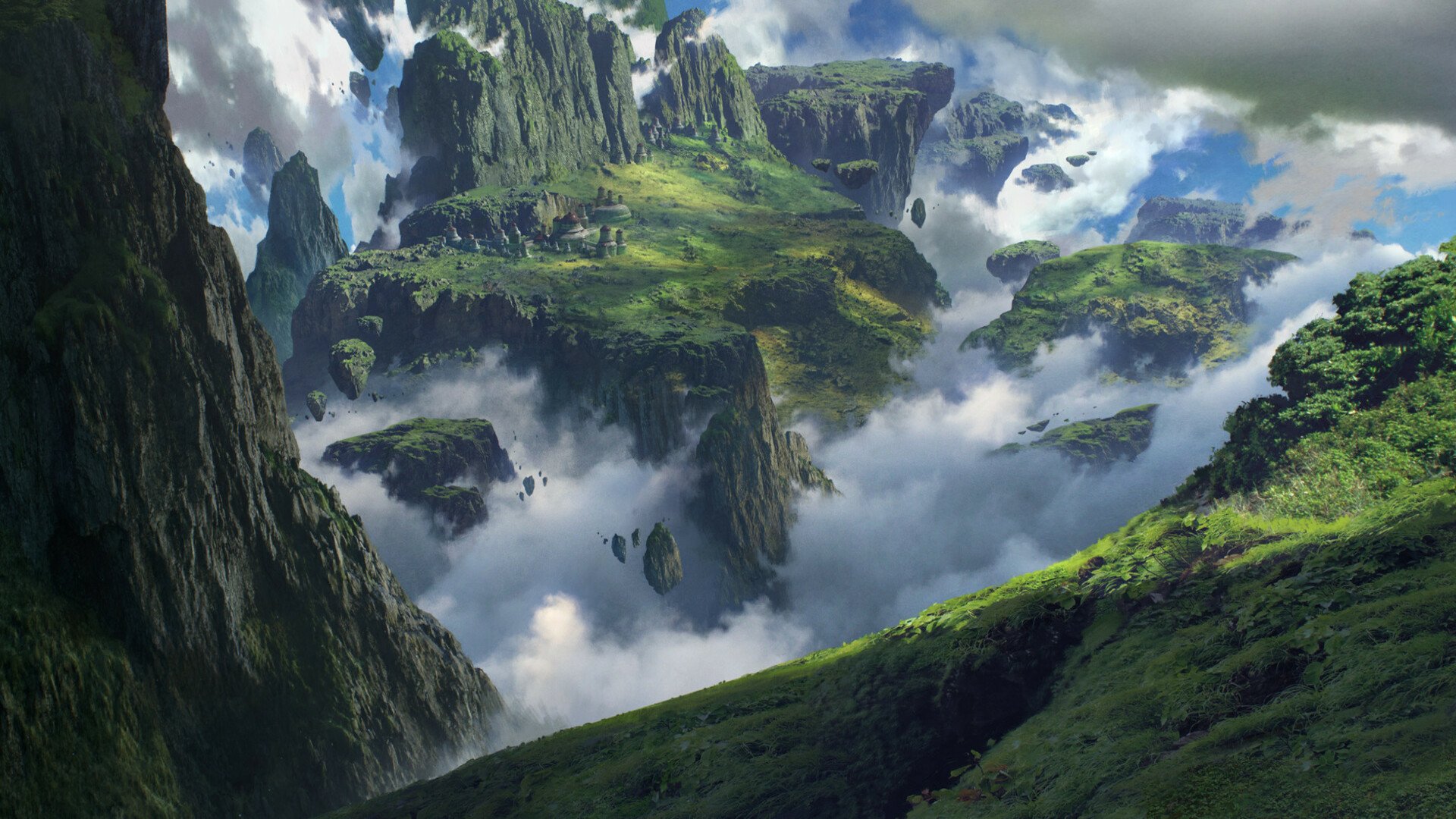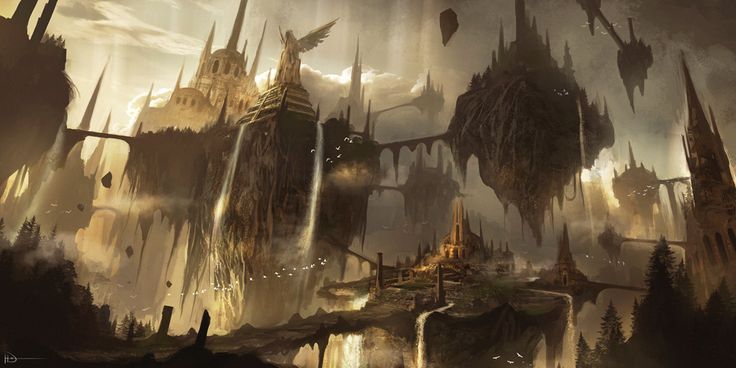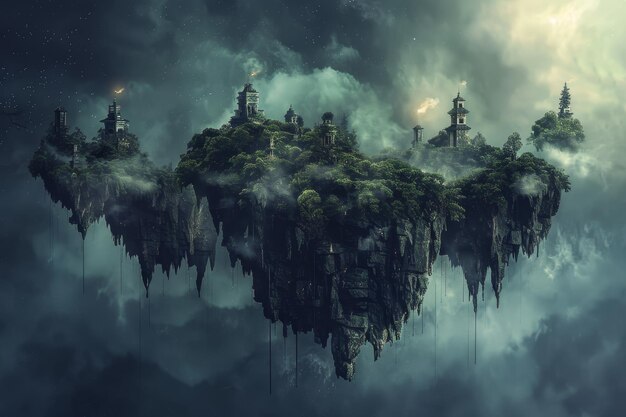Dragoneer
History
The Dragoneers, once known as the Drakefolk, emerged in the wake of the cataclysmic Second Rising of the Islands, an upheaval that marked the true birth of the Drakkisles and the dawn of the Third Age. Yet this event did not mark their beginning; traces suggest they once thrived in the land of Estria, long before the land was shattered. Still, it was not until the third millennium of the Third Age that their plight came into light, a people caught in limbo, unable to live as nomads, yet denied the stability of settlement. The floating islands of the Drakkisles offered no comfort. Their shifting, skybound nature posed an existential threat but worse still were the creatures they harbored. The isles take their name from the countless dracoid species that nest upon them, claiming the skies as their own and leaving the Dragoneers to carve out survival in the shadow of wings.
Naturally, the history of the Dragoneers remains shrouded in mystery. Strangely, we seem to know more about the land they inhabit than about the people themselves. The Drakkisles are divided into several clusters of floating islands, most notably the Fair-Isles, the Cloud-Isles, and the Under-Isles. Of these, the Fair-Isles are where the Dragoneers have flourished most. Scattered with floating ruins and remnants of forgotten eras, these islands are home to lakes and rivers that cascade down from above. Roads have been carved into their surfaces, and suspended bridges stretch across the chasms, linking the few settlements together. High above them lie the Cloud-Isles, shrouded in near-perpetual mist, veiled in myth. It is here that many of the Drakkisles’ waters are born, and where winged non-humans dwell beyond mortal reach. Lastly, the Under-Isles hang low in the sky, dark and foreboding. Here, the sun graces the land only for a few hours a day, and the rains often fall as thick, muddy torrents. Yet, curiously, many Dragoneers call these grim isles home, cherishing them despite their dread-filled nature.
Needless to say, the Dragoneers are few in number. To survive, they had to learn not only how to tame the land but also the beasts that hunted them. True to their name, the Dragoneers mastered the ways of the dracoids, learning not just to live alongside them or hunt them, but to bond with them. These were not mere beasts of burden or pets, but companions tied by a unique soul connection, one that could last a lifetime. When a Dragoneer successfully forms such a bond, they are henceforth known as a Scaled Rider, ascending to the closest thing their people know as nobility. Yet, as wondrous as this gift may be, it comes at a steep and harrowing cost. A father with seven children might see only one return from the taming. The rest would perish, devoured by the very creatures they sought to bind themselves to.
In the middle of the third century of the Fourth Age, a prophecy came true. A man appeared in the Drakkisles, mounted not on a mere wyvern or drake, but on a fully grown dragon. Undeniably so, for its sheer size and the absence of horns marked it as neither Visceragon nor Ramagon, but something older, purer, and far more terrifying. A single step from this beast could reduce a castle to rubble; a single breath could set an entire city district ablaze for moons. With this impossible mount, the man rallied the Drakkisles and its Scaled Riders, launching an invasion of the skies over Estria. From the ruins of vanquished Estrians and the cities that surrendered, he forged an empire in less than a decade. This empire stretched vast: from the northernmost reaches of Gaelie to the west, from the Horraclaeic Ocean in the north to deep within the Smoky Mounts of the south. Though it stood upon the shoulders of its founding emperor, the first of the Eowyn Dynasty, the empire endured long after his death. His reign was brief, cut short by the many powerful enemies among the Wealch-descended families of Estria, the powerfull jarls of Gaelie, the resilient fighters of Valya. His downfall, and that of his glorious and monstrous mount, is laid at their feet. But its legacy endures to this day, deminishing, but strong. Perhaps the first and last realm the Dragoneers will ever have.
Traits & Personnality
The Dragoneers are known for the striking variety of eye and hair colors they display at birth. Yet over time, both tend to shift, fading into deep crimson or a dark cinder hue, like the last flicker of a flame vanishing into shadow. Those born with brown eyes and hair often retain their natural coloring longer, but even they are not immune to change. It is not uncommon for their appearance to also alter dramatically with age, in ways both subtle and profound. This trait, this slow, inevitable transformation is one of the most distinct markers of the Dragoneer bloodline. is also worth mentioning that Dragoneers are naturally gifted climbers, as any journey, short or long, across the Drakkisles inevitably involves navigating steep cliffs and vertical paths.
The Dragoneers are a people of paradox. Their personalities are often marked by a tension between skepticism and superstition. Though quick to question what they see and hear, they are also deeply spiritual, harboring perhaps the only other major faith in Valklora besides the worship of Death. This faith, known as the Church of Ascension, does not reject the tenets of Death, but offers an alternative: the belief that upon death, one may rise again, not as a ghost or soul, but as a dracoid, reborn from one's own corpse. Fierce in the defense of their faith, Dragoneers remain surprisingly open to debate and discourse. Their willingness to host even gospels of the Mediarie, defenders of the newer interpretations of Death’s aspects, stands as proof of this. Dragoneers are also known for their commitment to justice. Unlike many cultures where retribution may be swift and crude, they believe in trials, not always to uncover the truth, but to ensure fairness. Above all, they carry a unique sense of wonder, a kind that does not dwell in the imagination, but takes shape in the world before their eyes. With the skies as their domain, they have developed a daring, adventurous spirit, a boldness to match the brevity of their lives.
Realms & Nobility
The Empire of the Dragoneer, ruled by the Eowyn Dynasty, is built on the ideals of fairness, equality, and opportunity, though all under one banner. Its societal structure functions as a meritocracy, where anyone, regardless of birth, can rise to the heights of aristocracy or even nobility. Yet, just as one may ascend, one may also fall. The aristocracy is composed of individuals recognized for their skill and influence, guild masters, order leaders, defenders of the faith, etc. Above them sit the lower ranks of nobility, those entrusted with governance: superintendents, ambassadors, judges, and governors, roles open to any citizen who proves worthy. At the pinnacle of this hierarchy stand the Scale Riders, the elite few who have bonded with a dracoid mount. They represent the high nobility of the empire. In principle, the path to becoming a Scale Rider is also open to all, regardless of origin, class, or even race. In practice, however, such ascensions are rare. To tame a dracoid is to survive the impossible and most do not. Their currency is known as the Scale—fragments of dracoid scales used in trade, valued far beyond gold or silver due to their rarity and the danger involved in acquiring them. Settlements within the Drakkisles rarely grow beyond the size of a town, with no true villages to speak of. These outposts are small and often sparsely populated, as life on the mainland peninsula proves far more favorable and sustainable.
Life in the Dragoneer Empire may indeed be easier than ever before. Strict laws have curbed criminality, trials are fair and hold all, noble or common, accountable, and both the land and the spoils of old wars continue to provide abundance. From citizen to aristocrat, most have every reason to be content with the realm’s status quo. Perhaps it is this very comfort that explains the empire’s recent stagnation, both in its expansion and its influence. Yet not all prosper equally. Slaves, most often purchased from the Gaelic realms, are granted certain rights under imperial law, but those rights mean little when branded and without the means to exercise them. Non-humans, though welcomed into society and treated as equals on paper, face a harsher reality. They may stand trial as any Dragoneer citizen, but if found guilty, their punishment is rarely lenient. For them, a guilty verdict often means exile, or a lifetime without the light of day.
Traditions
Dragoneer traditions are ancient and held in near-sacred regard, as many believe they quite literally kept the people alive through the ages. Yet, these customs are almost always unspoken, passed down without ceremony or formal acknowledgment. One such tradition occurs when a Scale Rider loses their mount, regardless of how the creature dies, the rider will harvest its scales and fashion them into a mantle. This rite bears no name, no ritual, yet it has been observed for generations without question. Another example is the “first flight,” a deeply personal trial. It is the father’s duty to frighten the child during their first time in the skies—for if they are to fear heights, then they should never attempt to bond with a dracoid. Such customs, quiet and ingrained, shape the Dragoneers more than any law or scripture ever could.
The Dragoneers preserve their history and some traditions primarily through oral storytelling. Only a few elements of their culture have ever been captured in lasting forms, through sculpture, tapestry, or other art. This explains the many gaps in our understanding of their lives before the rise of the empire. Culinarily, their diet is centered around the hunt—game brought down by Scale Riders across the Drakkisles, paired with a range of unique spices that grows on the Fair-Isles. Their lands yield little in terms of crops, with harvests being sparse and unreliable. However, the acquisition of new territories has greatly expanded their access to more varied produce, especially from the fertile northern regions of Estria. Among their favorites are dishes made from “odd-legumes”, as they are known, root-like plants mixed with richly spiced beast meats. Their wines are equally celebrated, brewed from Estrian berries, aged in dragonwood barrels, and flavored with their beloved array of spices.
Their architecture is relatively modest, primarily constructed from found ruins. However, a notable exception is their towers and stables. The towers are designed with windows larger than the typical archways of a castle, allowing winged beasts to fly in and out with ease. These windows are also used by the Scale Riders, enabling them to swiftly mount their steeds without the need to run to a stable. The stables, predominantly found on the mainland of Valklora, are built in a wide, circular layout, similar to an Okkram village, providing ample space for the mounts to breathe and move freely.
Learned
- Dracoid Arch-Nemesis (Always win initiative when fighting any form of dracoid creatures, +4 defense when attacking dracoid, +2 movement when attacking dracoid)
- Floating Bridge Layer (+1 grappling, advantage on using grapling weapon off combat [on inanimate object])
- Altitude Fighter (Any creature in flight rolls at disadvantage to attack you)
- Draconic Companion (Start with a hatched infant dracoid companion)
Inate
- Natural Climber (+1 body, Advantage rolls on any climbing checks. Also apply to save someone from falling)
- Athletic (+1 agility, adds handed movement)
- Iron Will (+1 will, advantage on will check off combat)
- Ashen Soul (Any fire damage is /2 but also equally divided amongst body and soul)


